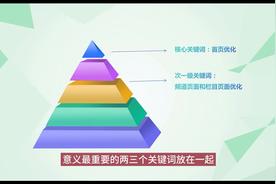In the vast digital landscape that is the World Wide Web, every website owner strives to stand out and attract visitors. However, merely having a visually appealing site isn't enough to ensure success. One crucial aspect that often gets overlooked is the optimization of the website directory structure. A well-organized and strategically laid out directory not only improves User experience but also boosts search engine rankings, leading to increased visibility and traffic.
What is a Website Directory?
A website directory is essentially the hierarchical organization of files and folders on your server that houses all the content for your site. It includes the pages, images, scripts, and other resources necessary to run your website. This structure is typically reflected in the URLs of your website, with directories acting as categories or sections within the site.
Why is Website Directory Structure Important?
The website directory structure plays a significant role in both user experience and search engine indexing. Here are several reasons why it's important to optimize your website directory:
1、User Navigation: A clear and logical directory structure makes it easy for users to navigate through your site. When users can find what they're looking for quickly and easily, they are more likely to stay on your site and engage with your content.
2、Search Engine Optimization (SEO): Search engines use web crawlers to index websites. A well-structured directory helps these crawlers to understand, crawl, and index your site efficiently. This can lead to better rankings in search results, as search engines will view your site as being organized and relevant.
3、Maintenance: A well-organized directory structure makes it easier to maintain your site. Updating content, fixing broken links, and adding new features becomes more straightforward when everything has its proper place.

4、Scalability: As your website grows, a good directory structure will allow for smooth expansion without requiring significant restructuring. This scalability ensures that your site can continue to perform well as it adds more content and features.
Best Practices for Website Directory Optimization
Optimizing your website directory involves adhering to certain best practices that help search engines understand your content better and improve user experience. Here are some guidelines to follow:
1、Keep It Simple: Avoid creating a complex directory structure with too many subdirectories. Stick to a simple, flat structure where possible, as this makes it easier for both users and search engines to find their way around.
2、Use Descriptive Names: Name your directories using clear, descriptive language that accurately reflects the content within. This practice helps users and search engines understand the context of each directory.
3、Keyword Inclusion: Incorporate relevant keywords into directory names where appropriate. This can enhance your site's relevance for those keywords in the eyes of search engines.
4、Separate Static and Dynamic Content: Organize your static content (HTML, CSS, JavaScript) separately from dynamic content (Content Management system files). This separation keeps your site structure clean and secure.
5、Avoid Duplicate Content: Ensure that there is no duplicate content across different directories. This can confuse search engines and dilute the authority of your content.
6、Use Redirects Wisely: If you need to change the URL structure of your site, use 301 redirects to guide users and search engines to the new locations. This maintains link equity and prevents broken links.
7、Limit Indexing: Use the robots.txt file to instruct search engines on which parts of your directory they should or should not index. This can prevent sensitive information from being exposed and focus search engine attention on key areas.
8、Consider Sitemaps: Implementing a sitemap can further assist search engines in understanding your website structure. A sitemap is a file where you can list all the important pages of your site, helping search engines to crawl and index them more efficiently.
9、Regular Audits: Conduct regular audits of your directory structure to identify any issues such as broken links, orphaned pages, or outdated content. Addressing these issues keeps your site healthy and optimized.
10、Consult with Experts: If you're unsure about the best directory structure for your site, consult with SEO professionals or web developers who can provide tailored advice based on your specific needs.
Conclusion
Your website directory structure is the backbone of your online presence. By optimizing it, you're not only improving the user experience but also sending signals to search engines that your site is organized, relevant, and trustworthy. Remember that directory optimization is an ongoing process that requires regular maintenance and updates. Stay proactive, keep your structure simple and intuitive, and watch as your website's performance soars.
评论列表 (0条)